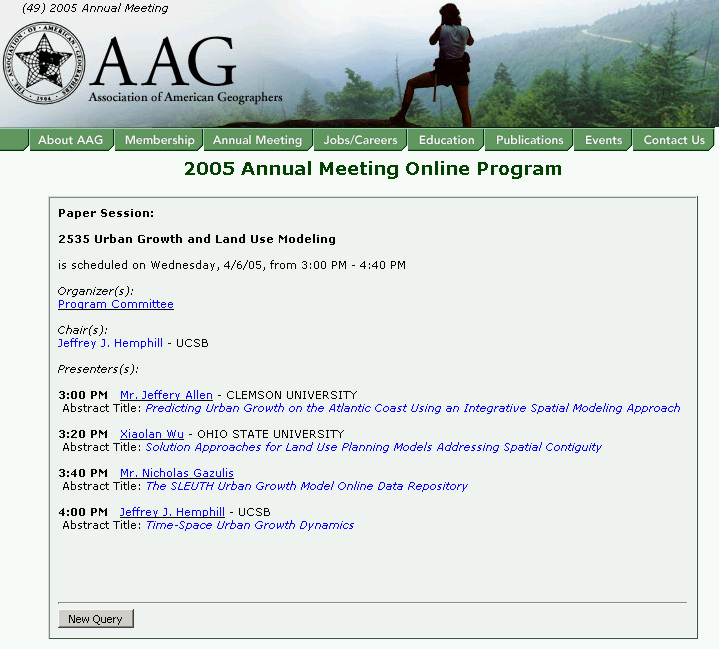

Abstract Title: Time-Space Urban Growth Dynamics
Abstract:
Following a tradition in geographic and regional science, this research is seeking to provide a means of understanding the processes and forms that characterize the spatial growth of cities through time and across scales. Theory and heuristics that describe urban growth have yet to lead to formalized general theory that is predictive of spatial form through time. Adapting knowledge gained from experiments based on an abstract theoretical model, and through spatial pattern analysis techniques designed to draw out the influence of different spatial factors, it may be possible to improve urban growth models by making implicit spatial factors such as barriers, transportation routes and topography. A pattern template that fits residual of observed mapped patterns and distortions to patterns generated by the experimental model enables the identification of general, and perhaps universal, “spatio-temporal fingerprints” that may be broadly extensible to other developing urban areas. The theoretical bases for the presented research emphasizes that the spatial evolution of urban areas follows an oscillation between the spatial processes of diffusion and coalescence in relation to a central (historical) urban core. This hypothesized growth characteristic has been detected in empirical measurements. Identify the characteristics of urban growth that reflect the influence of factors that are unique to the formation of cities and comparing model-based pattern signatures against actual patterns will focus future analysis on the characterization of "patterns of distortion" in terms of the residuals of theoretical model outcomes and actual mapped urban extents.